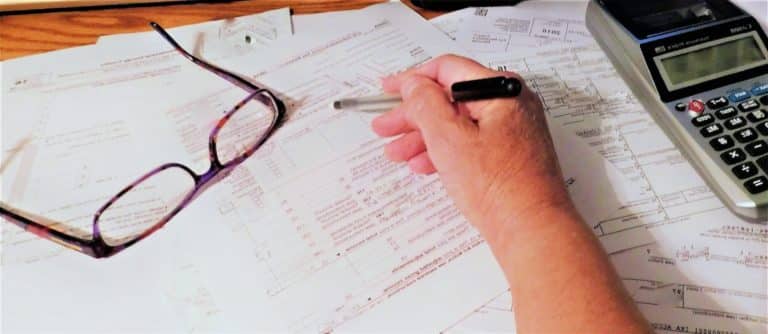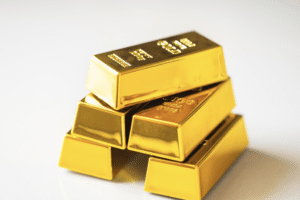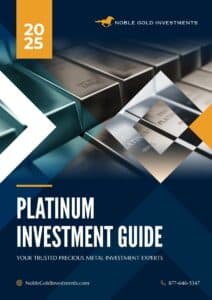Investing in precious metals within an Individual Retirement Account (IRA) can provide a promising alternative to conventional stocks and bonds. With the unpredictable nature of financial markets, it is worth considering the diversification benefits that physical assets like gold, silver, platinum, and palladium can offer. However, navigating the tax implications associated with precious metals in an IRA can be complex and requires a clear understanding of the rules and regulations.
One of the primary tax advantages of holding precious metals in an IRA is their tax-deferred status. While securities like stocks or mutual funds may be subject to capital gains tax when sold, precious metals within an IRA experience growth tax-free, giving them an edge over other investment options. This tax-deferred feature allows investors to maximize the value of their retirement portfolio by minimizing potential tax liabilities.
Keep in mind that not all precious metals are eligible for inclusion in an IRA. There are specific purity standards set by the Internal Revenue Service (IRS) that must be met for an asset to be considered IRA-approved. In addition, the storage and management of precious metals within an IRA must be conducted by an authorized IRA custodian, ensuring that all transactions and handling adhere to proper tax guidelines. Understanding the intricacies of these tax rules is essential for individuals considering the incorporation of precious metals into their retirement strategy.
How A Precious Metals IRA Is Different Than A Conventional IRA
The primary difference between a precious metals IRA and a Conventional IRA is the assets they hold. While a Conventional IRA typically consists of a mix of stocks, bonds, and mutual funds, a precious metals IRA allows individuals to hold physical precious metals such as gold, silver, platinum, and palladium as part of their retirement portfolio. A precious metals IRA provides an alternative investment option for diversification, potentially offering a hedge against inflation and economic uncertainty.
Furthermore, the tax implications of a precious metals IRA differ from those of a Conventional IRA. It’s important to note that not all precious metals are eligible for inclusion in an IRA, and there are specific IRS regulations governing the types of metals that can be held. Additionally, the tax treatment of gains and distributions from a precious metals IRA may vary from that of a Conventional IRA, and it’s essential for investors to understand these differences. It’s always advised to seek guidance from financial and tax professionals to ensure compliance with IRS regulations and to make informed decisions regarding their retirement savings strategy.
IRA Eligible Precious Metals
Not all precious metals are eligible for inclusion in a precious metals IRA. The IRS has established specific criteria for the types of metals and forms of these metals that can be held in such an IRA. The following table outlines the eligible precious metals and their respective minimum fineness requirements:
| Precious Metal | Minimum Fineness |
|---|---|
| Gold | 0.995 or 99.5% |
| Silver | 0.999 or 99.9% |
| Platinum | 0.9995 or 99.95% |
| Palladium | 0.9995 or 99.95% |
The most common forms of precious metals held in IRAs are:
- Bullion: Pure precious metal bars or ingots that meet the minimum fineness requirements.
- Coins: Legal tender coins minted by either the US or a foreign government, which meet the minimum fineness requirements.
It is important to note that certain collectible coins and forms of precious metals are not permitted within a precious metals IRA. Always consult a financial professional or the IRA custodian about specific metals or coins before adding them to your IRA.
Tax Implications of Precious Metals Investing
Investing in precious metals such as gold, silver, platinum, and palladium can have unique tax implications compared to other types of investments. For tax purposes, the IRS classifies these physical precious metals as collectibles, which can affect the way gains from their sale are taxed.
If held for more than one year, gains on collectibles can be taxed at a maximum capital gains rate of 28%, which is higher than the long-term capital gains rates for most other assets, typically capped at 20%. This distinction is crucial for investors to consider when incorporating precious metals into their investment portfolio, as it may influence the after-tax return on their investment.
When investing in precious metals through an IRA, there are additional considerations to keep in mind. While a precious metals IRA allows for the inclusion of gold and other precious metals, it must conform to certain standards set by the IRS. For example, the metals must meet specific fineness requirements, and they must be held by the IRA trustee or custodian rather than the IRA owner to comply with IRS regulations. The tax benefits associated with a traditional IRA, such as tax-deferred growth, apply to a precious metals IRA as well. However, when distributions are taken from a Precious Metals IRA, they may be taxed as ordinary income, and if the precious metals are considered collectibles by the IRS, a higher tax rate could apply.
Traditional vs. Roth IRA Tax Treatment
When investing in precious metals through an Individual Retirement Account (IRA), it is crucial to understand the tax implications and differences between a Traditional IRA and a Roth IRA.
- Traditional IRA: Contributions to a Traditional IRA are usually made with pre-tax dollars, meaning that taxes are deferred until the time of withdrawal. When making withdrawals from a Traditional IRA, the full amount withdrawn is considered taxable income and will be subject to federal income tax. This includes any appreciation in the value of precious metals held in the account.
- Roth IRA: On the other hand, contributions to a Roth IRA are made with after-tax dollars, which means that withdrawals, including appreciation in the value of precious metals, are generally tax-free, provided certain requirements are met, such as being at least 59 ½ years old and having the account open for at least five years.
Tax Reporting Requirements
As the account holder of a precious metals IRA, tax reporting is an essential requirement. Here are the primary tax reporting responsibilities:
- IRA Contributions: Annually, the custodian of your IRA must report your total IRA contributions to the Internal Revenue Service (IRS) on Form 5498. This includes both Traditional and Roth IRA contributions, as well as rollovers from other accounts during that tax year.
- IRA Distributions: Similarly, when you take distributions from your IRA, regardless of whether it’s a Traditional or Roth IRA, your custodian will send you and the IRS a Form 1099-R. This form will show the amount of the distribution, which must be reported on your income tax return.
Taxable Distribution and Penalties
Understanding the potential tax consequences and penalties for premature withdrawals from your precious metals IRA is crucial. Here are some key points to consider:
- With a Traditional IRA, if you withdraw before the age of 59 ½, you will be subject to a 10% early withdrawal penalty on top of the federal income tax. Certain exceptions may apply, but it is advisable to consult a tax adviser.
- For a Roth IRA, the rules regarding the 10% early withdrawal penalty are similar. However, contributions (not earnings) may be withdrawn tax-free and penalty-free at any time.
- It’s worth noting that the IRS classifies precious metals as collectibles. Therefore, under specific circumstances, profits made from the sale of precious metals within an IRA may be subject to a higher 28% long-term capital gains tax instead of the more favorable 15% or 20% tax rate, which applies to other investments.
By understanding the tax implications of precious metals investing in an IRA, you can make informed decisions to create an investment plan that works best for you while ensuring compliance with IRS regulations.
Storage and Custodianship of IRA Precious Metals
When it comes to investing in precious metals within an Individual Retirement Account (IRA), proper storage and custodianship are vital for both compliance and protection of your investment. This section will discuss the importance of choosing a reliable custodian and the significance of secure storage.
Choosing a Reliable Custodian
An IRA custodian is a financial institution responsible for holding and managing IRA assets. It is essential to select a reputable and reliable custodian for your precious metals IRA. The following are tips to help you choose the right custodian:
- Research their reputation: Check online reviews, news articles, and Better Business Bureau ratings to ensure the custodian has a strong reputation within the industry.
- Compare fees: Custodians charge various fees for their services, including annual account fees, transaction fees, and storage fees. Make sure to compare these costs to avoid paying excessive charges.
- Examine the offered services: Some custodians offer a wider range of services, such as online account access, educational resources, and personalized customer support. Determine if these services are important to you and worth any extra fees.
- Confirm compliance: Ensure the custodian adheres to regulations set by the Internal Revenue Service (IRS). This ensures that your precious metals IRA remains complaint and your investments retain their tax-advantaged status.
Importance of Secure Storage
After selecting a reliable IRA custodian, secure storage of your precious metals is the next critical step. Since the IRS considers certain precious metals as collectibles, they cannot be held physically by the IRA owner. Instead, they must be stored in an approved storage facility. Key factors to keep in mind when choosing a storage facility include:
- Depository type: Reputable storage facilities, such as the Delaware Depository, are either state-chartered or authorized by the federal government. These facilities are specifically designed to store precious metals and provide adequate protection against theft and physical damage.
- Insurance coverage: Verify that the storage facility has comprehensive insurance coverage to protect your investment in case of theft, loss, or damage. This should include coverage for the full replacement value of your precious metals.
- Segregated storage: Some storage facilities offer segregated storage, meaning your precious metals will be held separately from those of other clients. This ensures that your assets will not be commingled with other investors’ holdings.
- Access and reporting: Choose a storage facility that provides you with regular statements and updates on your precious metals holdings. Additionally, the facility should grant your IRA custodian access to account information and the ability to audit onsite.
By taking the time to find a reliable custodian and secure storage solution for your IRA precious metals, you can confidently protect your investment and maintain its tax-advantaged status.
Financial and Market Considerations
Diversification and Risk Management
An essential aspect of investing is diversifying your portfolio to reduce risk. Investing in precious metals within an Individual Retirement Account (IRA) can be an effective way to achieve diversification and hedge against inflation. Precious metals, such as gold and silver, often have an inverse relationship with stocks and other traditional assets. This means that they tend to perform well when the stock market is struggling and vice versa.
For example, a well-diversified portfolio could include a mix of different assets, such as:
- Stocks
- Bonds
- Real estate
- Money-market funds
- Precious metals
Effectively managing risk is crucial for long-term financial success. By including precious metals in your IRA, you can protect against market volatility and economic uncertainty. Additionally, the market value of precious metals tends to hold steady or increase during periods of high inflation or geopolitical tensions.
Impact of Market Conditions on Precious Metals
Precious metals are influenced by various market conditions, including interest rates, stock market performance, and global economic health. In general, precious metals, like gold and silver, are considered safe-haven investments. They often perform well when other investments are underperforming or during times of economic instability.
Interest rates are one of the essential factors affecting precious metals within an IRA. When interest rates are low, the opportunity cost of holding non-yielding assets like gold and silver is reduced. This makes them more attractive to investors, and their prices tend to rise. On the other hand, when interest rates are high, investors are more likely to invest in interest-bearing assets, causing precious metal prices to decline.
Stock market performance can also impact the demand for and prices of precious metals. When the stock market is performing well, investors may see more significant potential gains in equities and shift their investments away from precious metals. Conversely, during periods of stock market drops or increased volatility, investors often turn to precious metals as a safer alternative, increasing their prices.
It’s essential to keep track of various market conditions and financial indicators to make informed decisions when investing in precious metals for your IRA. Monitoring interest rates, stock market trends, and global economic news can help you make more educated choices about when to buy or sell precious metals within your portfolio. By understanding the diverse factors affecting precious metal investments, you can better optimize your IRA’s risk management and overall financial performance.
Legal and Regulatory Compliance
When considering investment in precious metals through an Individual Retirement Account (IRA), it is essential to ensure compliance with the legal and regulatory requirements. This section aims to provide a concise overview of the key entities and considerations related to investing in precious metals within your IRA.
IRS Regulations and Purity Standards
The Internal Revenue Service (IRS) plays a crucial role in regulating precious metal investments within an IRA. The Internal Revenue Code (IRC) Section 408(m) specifies minimum purity standards for precious metals held in an IRA:
| Metal | Minimum Purity |
|---|---|
| Gold | 0.995 (99.5%) |
| Silver | 0.999 (99.9%) |
| Platinum | 0.9995 (99.95%) |
| Palladium | 0.9995 (99.95%) |
It is important to note that not all precious metal products meet these purity standards. Before making an investment, consult with a tax professional to ensure that your chosen precious metals comply with the applicable regulations.
The IRS also requires that IRAs invest in specific types of permissible assets. Precious metals must be in the form of either coins or bullion. Approved coins include the American Gold Eagle, the American Silver Eagle, the Canadian Gold Maple Leaf, and others. You should seek advice from a tax professional to determine which specific coins and bullion products are allowable within your IRA.
Compliance with Federal Laws
In addition to IRS regulations, it is vital to ensure compliance with federal laws while investing in precious metals within an IRA. A commonly used investment vehicle for precious metals in IRAs is the grantor investment trust. By establishing a grantor investment trust, investors can hold their IRA assets, including precious metals, with a trustee approved by the IRS.
One important aspect of establishing a grantor investment trust is obtaining a Private Letter Ruling (PLR) from the IRS. A PLR serves as a written determination confirming that the trust complies with the legal and regulatory requirements for an IRA. While obtaining a PLR is complex and time-consuming, working with a tax professional with experience in grantor investment trusts can help facilitate the process.
In conclusion, maintaining legal and regulatory compliance when investing in precious metals within an IRA involves adhering to IRS regulations, meeting purity standards, and ensuring compliance with federal laws. It is essential to consult with a tax professional well-versed in the areas of grantor investment trusts and precious metal investments to help guide you through the process.
Open A Precious Metals-Backed IRA With Noble Gold Investments
If you’re interested in diversifying your portfolio and safeguarding your retirement with precious metals, Noble Gold Investments offers a number of options for just about any investor. Whether you’re interested in a gold IRA, silver IRA, platinum IRA, or investing in a mix of precious metals, our experienced precious metals professionals can answer any questions you have about investing in precious metals with Noble Gold Investments.
Call us now at (877) 646-5347 to speak with a member of our team, or click here to create your free account with Noble Gold Investments.







